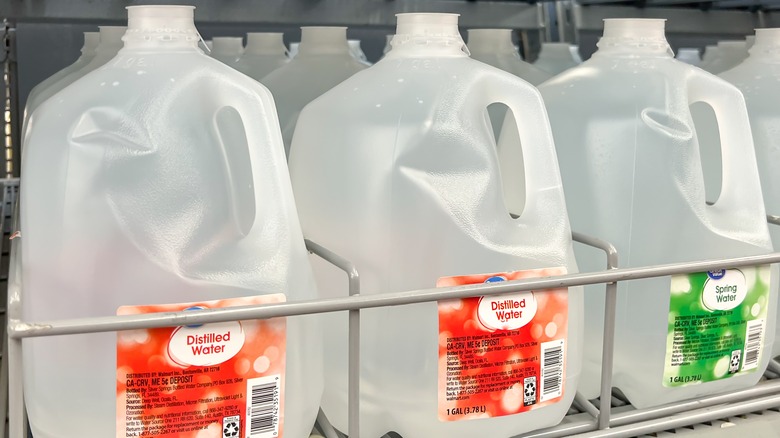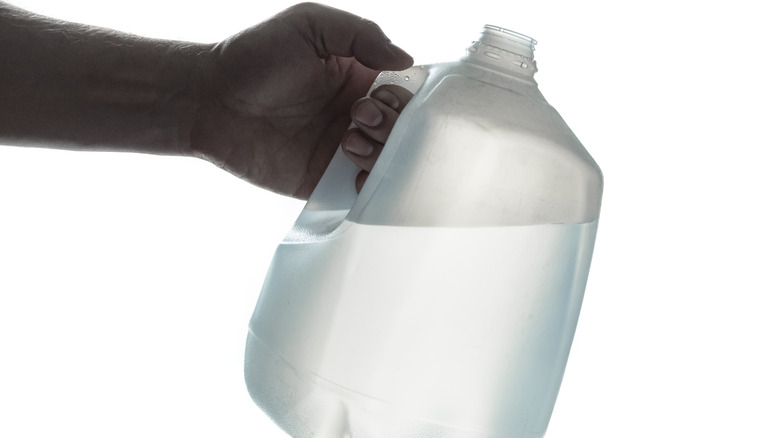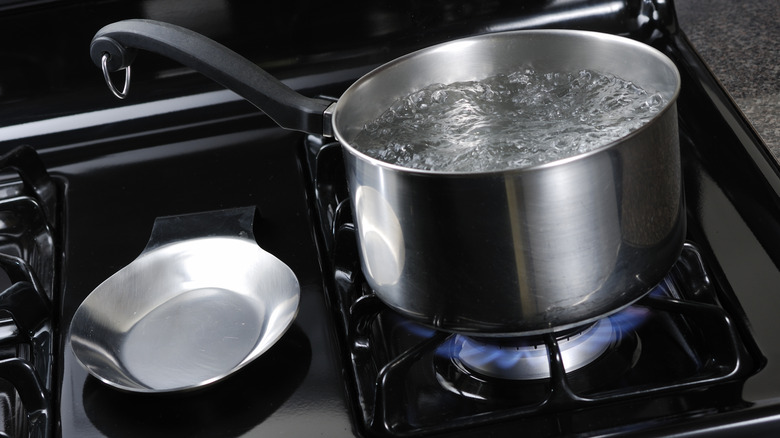Why The US Has A Distilled Water Shortage (And How You Can Make Your Own)
Why drink distilled water in the first place? After all, it tastes flat, and it inherently lacks minerals — nutrients that many people primarily receive from their drinking water. Distilled water's mineral deficiency also means that it may draw minerals from whatever it touches, including any plastic bottles in which it's contained (which nullifies the purification) or even your own body once you drink the liquid (which deprives you of minerals). More often than consuming it, people use distilled water for industrial and household purposes, like when clean water is needed to run various appliances.
However, as confirmed by Medical News Today, distilled water is indeed safe to drink as long as you get enough minerals from other dietary sources. This fact can prove essential to your health if your water sources have been contaminated with harmful chemicals or pathogens. Unfortunately, however, there is an ongoing shortage of distilled water in the United States.
What's causing the shortage?
In recent years, the United States has struggled with both water contamination and a resulting lack of distilled water. For instance, an ecological disaster during early 2023 caused by a train derailment in Ohio sullied over a million gallons of water with hazardous materials, as reported by CBS News. Despite assurances from government officials that the local drinking water was safe to consume, many residents were skeptical. That sort of event naturally motivates consumers to seek out pure distilled water from retailers, which often pushes the demand higher than its available supply.
An industry insider, Rocky Mountain Water Distillers, recently explained that these events increasingly disrupt the market. Instances of local water shortages scattered across the country have had a notable impact since the late 2010s. Unfortunately, the supply chain issues and lack of labor primarily caused by the pandemic have worsened this trend, making it more widespread. So, what are people to do?
How to make your own distilled water
Luckily, consumers don't need to rely solely on the government or private companies for clean water. Buying an at-home water distiller is possible, but you can even distill water in your kitchen with household items most folks already own. While the process is time- and labor-intensive, it also saves money and helps protect one's health.
First, collect your non-distilled water, whether it be from the tap, nature, or a retailer. Second, place a small pot inside a large pot filled partially with water (so that the smaller pot is floating atop the surface of the liquid). Next, place the large pot on the stove and bring it to a boil, then place a curved lid upside-down over the top of the large pot (adding ice to the concave topside will quicken the distillation). Allow the water to evaporate over time, condense onto the lid's curved underside, and drip into the smaller pot. Turn off the stove, allow things to cool down, and carefully collect your distilled water from the smaller pot. After that, you can confidently drink the water without worry.


